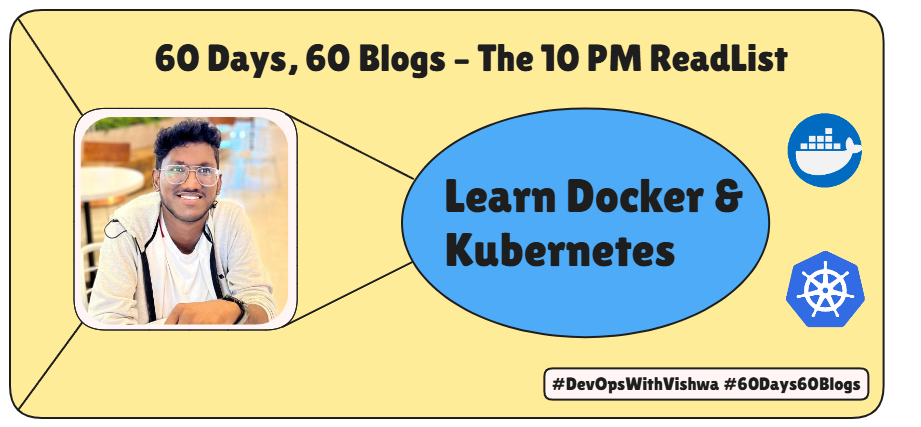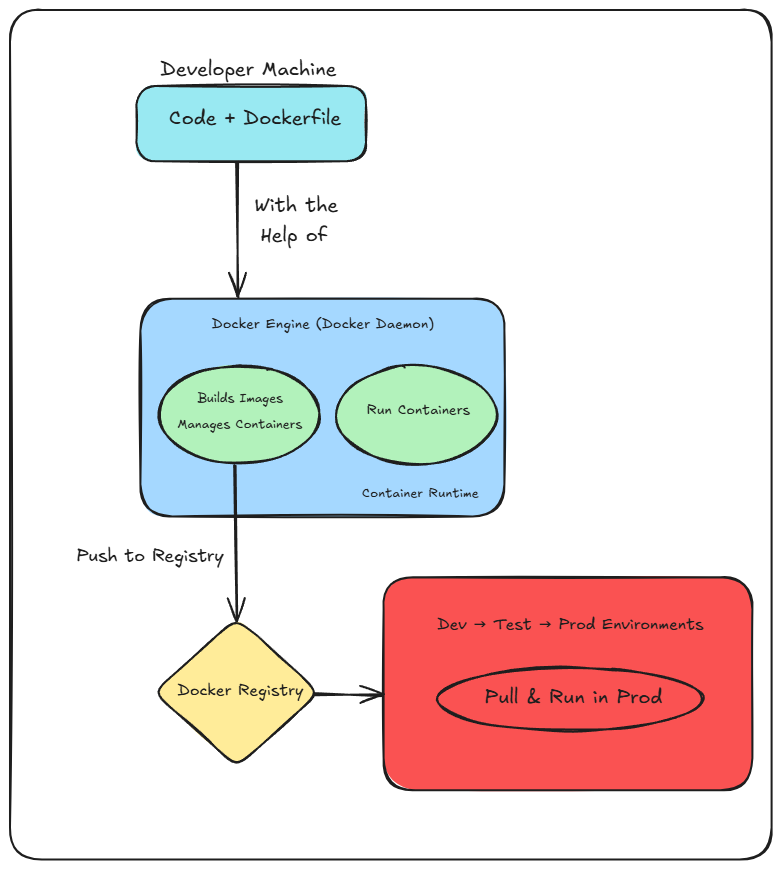ReadList #1 – Docker & Containers: The Basics
 VISHWA S
VISHWA S
From Virtual Machines to Docker Containers:
1. Virtual Machines (VMs)
A VM is a software-based simulation of a physical computer, running an OS on top of a hypervisor.
Example: Running Windows inside Linux using VirtualBox.
Key Components: Hypervisor, Guest OS, Virtualized Hardware.
2. Containers vs. VMs
| Feature | Virtual Machine (VM) | Container |
| Size | Large (GBs) | Small (MBs) |
| Boot Time | Minutes | Seconds |
| Isolation | Full OS per VM | Shared OS kernel |
| Efficiency | Heavy (needs more RAM/CPU) | Lightweight |
- Example: Instead of running multiple VMs with full OS installations, you can run lightweight containers sharing the host OS kernel.
3. What is Docker?
Docker is a platform that allows you to build, ship, and run applications inside containers.
- Example: Running a Python app in a container without installing Python on your machine.
4. Dockerfile
A script containing instructions to build a Docker image.
Example Dockerfile:
FROM python:3.9 WORKDIR /app COPY . . RUN pip install -r requirements.txt CMD ["python", "app.py"]Explanation:
FROM→ Base image (Python 3.9)WORKDIR→ Sets working directoryCOPY→ Copies files from host to containerRUN→ Executes commands inside containerCMD→ Runs application when container starts
5. Docker Registry
A storage for Docker images.
Public: Docker Hub
Private: AWS ECR, Azure ACR, GitHub Container Registry
6. Docker Architecture

Docker Daemon: Background service managing containers.
Container Runtime: Software responsible for running containers (e.g.,
containerd).
7. Workflow: Build, Push, Pull, Run
Build Image:
docker build -t myapp .Push to Registry:
docker push myrepo/myapp:latestPull on Another Machine:
docker pull myrepo/myapp:latestRun Container:
docker run -d -p 5000:5000 myrepo/myapp
Conclusion:
In this session, we broke down the fundamentals of Docker and containerization, from understanding how VMs differ from containers to exploring Docker’s architecture and workflow. These notes offer a practical foundation for building, shipping, and running applications efficiently. Keep this guide handy as you continue your journey into DevOps, and get ready for more insights in our upcoming ReadList sessions. Happy learning!
Subscribe to my newsletter
Read articles from VISHWA S directly inside your inbox. Subscribe to the newsletter, and don't miss out.
Written by

VISHWA S
VISHWA S
Hey there! I'm Vishwa, a DevOps Engineer. Curious about me? Check out my profile and posts, but here's a quick overview. I've spent the past two years building credibility, consistently working on projects, and upskilling myself. I'm a self-learner, and my posts reflect my journey. When it comes to technical expertise, I'm proficient in Linux, Networking, Shell Scripting, Docker, Ansible, Terraform, Kubernetes, Prometheus, Grafana, Loki, Jenkins, GitHub Actions, Python, Go, and Java. Wondering about my cloud experience? I'm well-versed in AWS, Digital Ocean, and GCP. I'm also skilled in troubleshooting. My ability to self-motivate and search for solutions allows me to quickly adapt to new technologies. And yes, I love writing. Sharing knowledge through blogs is something I’m passionate about. To reach out to Me, You can do DM and also leave an E-mail here at vishwa20042003@gmail.com, Waiting for your Connections and Opportunities.